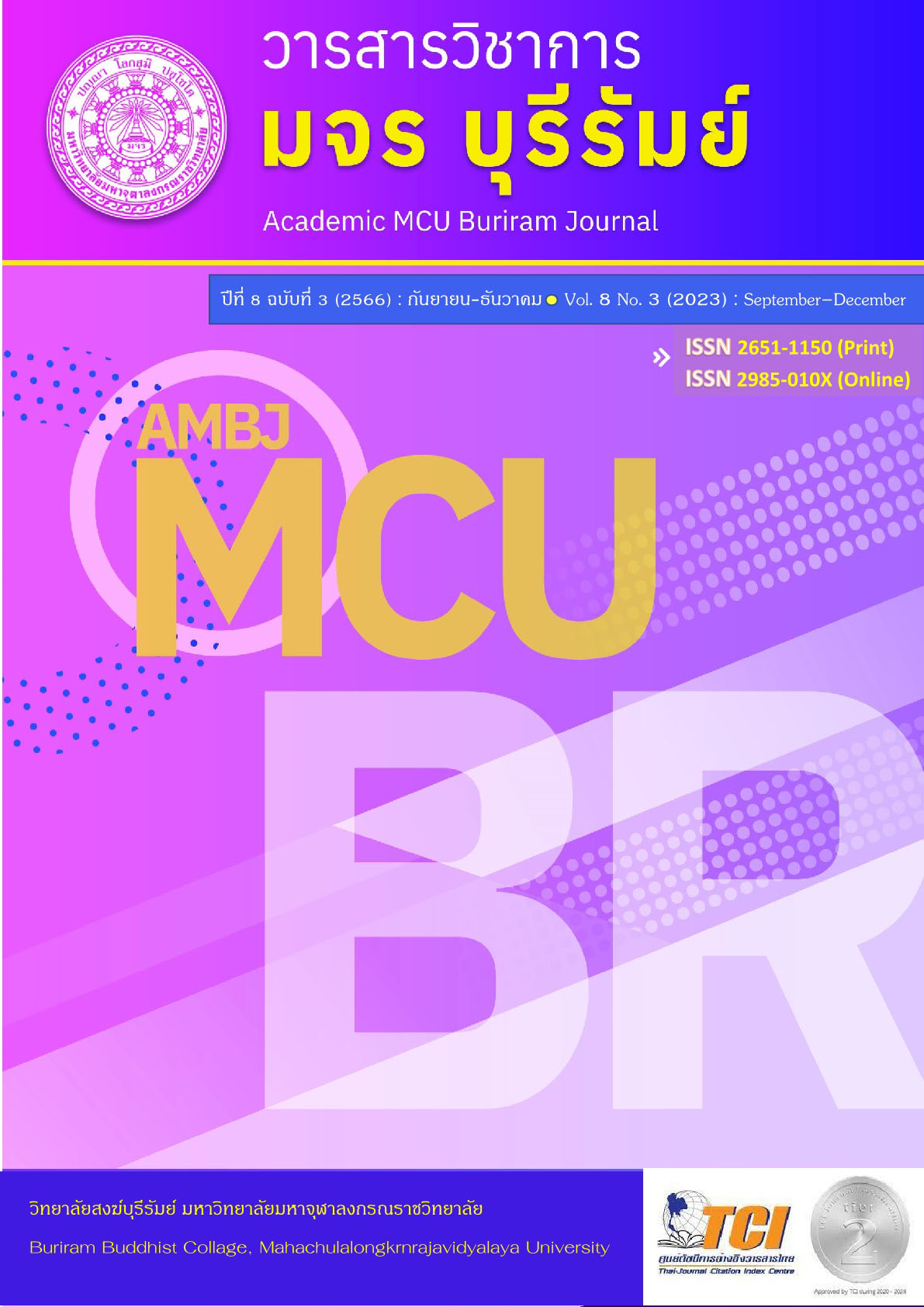Cultural Tourism to Promote the Chak Phra Tradition and Thod Pha-Pa Festival Surat Thani Province
Keywords:
Cultural Tourism, Traditions, Chak Phra, Thod Pha-PaAbstract
Cultural attractions It is a place to study history, culture, ancient sites and antiques. Cultural tourism combined with traditional wisdom, community way of life, environmental conditions as well as the way of life of the people or in other words Travel to study and learn about the surroundings and to relate to the things that exist in the world in a linkage and interdependence occur inseparably. Cultural tourism is therefore a tourism related to history as well, such as religion, traditions, rituals, handicrafts, food, art, language, including architecture, sculpture, way of life and including leisure activities. Tourism Management of Chak Phra and Thod Pha-Pa Festival of Surat Thani Province It is another tradition that has a history related to Buddhism. It is a tradition that has been going on since the past. there is evidence Clearly during the Srivijaya Empire which is the center of prosperity of the Srivijaya Empire spreading prosperity to other areas The tradition of Chak Phra and Thod Pha-Pa in many areas, including Chaiya District, Tha Chang District, Phun Phin District, Kanchanadit District Koh Samui District Koh Phangan District Wiang Sa District, Mueang District, and other districts Although there is no Chak Phra Festival held in the district But all of them participated in the Chak Phra festival, namely sending a boat to participate in the Chak Phra festival organized by the Muang District. which is now considered an important tradition and the greatest of Surat Thani Province.
References
กระทรวงศึกษาธิการ. (2538). การวัฒนธรรมศึกษากระบวนการบริหารและจัดการวัฒนธรรม. กรุงเทพมหานคร: โรงพิมพ์บริษัทประชาชน.
การท่องเที่ยวแห่งประเทศไทย. (2548). ความสำคัญของอุตสาหกรรมการท่องเที่ยว. กรุงเทพมหานคร: การท่องเที่ยวแห่งประเทศไทย.
ฐิรชญา มณีเนตร. (2552). ไทยศึกษาเพื่อการท่องเที่ยว. ขอนแก่น: คลังนานาวิทยา.
ประภาศรี สีหอำไพ. (2538). วัฒนธรรมทางภาษา. กรุงเทพมหานคร: จุฬาลงกรณ์มหาวิทยาลัย.
พระมหาฐิติพงศ์ ชูจิตต์. (2561). บทบาทของพระสงฆ์ต่อการมีส่วนร่วมในการสงวนรักษาประเพณีชักพระ จังหวัดสุราษฎร์ธานี. วิทยานิพนธ์ปริญญามหาบัณฑิต. มหาวิทยาลัยธรรมศาสตร์.
เพียงใจ พร้อมมูล, มณฑิรา รอดเจริญ และมยุรี เผือคง. (2529). ประเพณีการชักพระของภาคใต้และประเพณีการชักพระของจังหวัดสุราษฎรธานี. วารสารศรีวิชัย, 5(5), 161-165.
รัชนีกร เศรษโฐ. (2532). โครงสร้างสังคมและวัฒนธรรมไทย. กรุงเทพมหานคร: ไทยวัฒนาพานิช.
ราชบัณฑิตยสถาน. (2542). พจนานุกรรมฉบับราชบัณฑิตสถาน พ.ศ. 2542. กรุงเทพมหานคร: ราชบัณฑิตยสถาน.
วิจิตรา ขอนยาง. (2532). การศึกษาประเพณีจากวรรณกรรมพื้นบ้านอีสาน. ปริญญานิพนธ์ศิลปศาตรมหาบัณฑิต. บัณฑิตวิทยาลัย: มหาวิทยาลัยศรีนครินทรวิโรฒมหาสารคาม.
สมชัย ใจดี และยรรยง ศรีวิริยาภรณ์. (2536). ประเพณีและวัฒนธรรมไทย. กรุงเทพมหานคร: ไทยวัฒนาพานิช.
สัญญา วัชรพันธ์. (2535). วัฒนธรรมที่ปรากฏในพระเพณีลากพระเดือน 11 ของชาวนครศรีธรรมราช. ปริญญานิพนธ์ศิลปศาสตรมหาบัณทิต. บัณฑิตวิทยาลัย: มหาวิทยาลัยศรีนครินทรวิโรฒ.
สุธิวงศ์ พงค์ไพบูลย์. (2529). "เรือพระ". สารานุกรมวัฒนธรรมภาคใต้ พ.ศ. 2529 (เล่มที่ 8). สงขลา: สถาบันทักษิณคดีศึกษา มหาวิทยาลัยศรีนครินทรวิโรฒ.
สุพัตรา สุภาพ. (2541). สังคมและวัฒนธรรมไทย ค่านิยม ครอบครัว ศาสนา ประเพณี. กรุงเทพมหานคร: ไทยวัฒนาพานิช.
Downloads
Published
How to Cite
Issue
Section
License
Copyright (c) 2023 Academic MCU Buriram Journal

This work is licensed under a Creative Commons Attribution-NonCommercial-NoDerivatives 4.0 International License.
ทัศนะและความคิดเห็นที่ปรากฏในบทความวารสารฉบับนี้ถือเป็นความรับผิดชอบของผู้เขียนบทความนั้น ไม่ถือเป็นทัศนะและความรับผิดชอบของบรรณาธิการ





